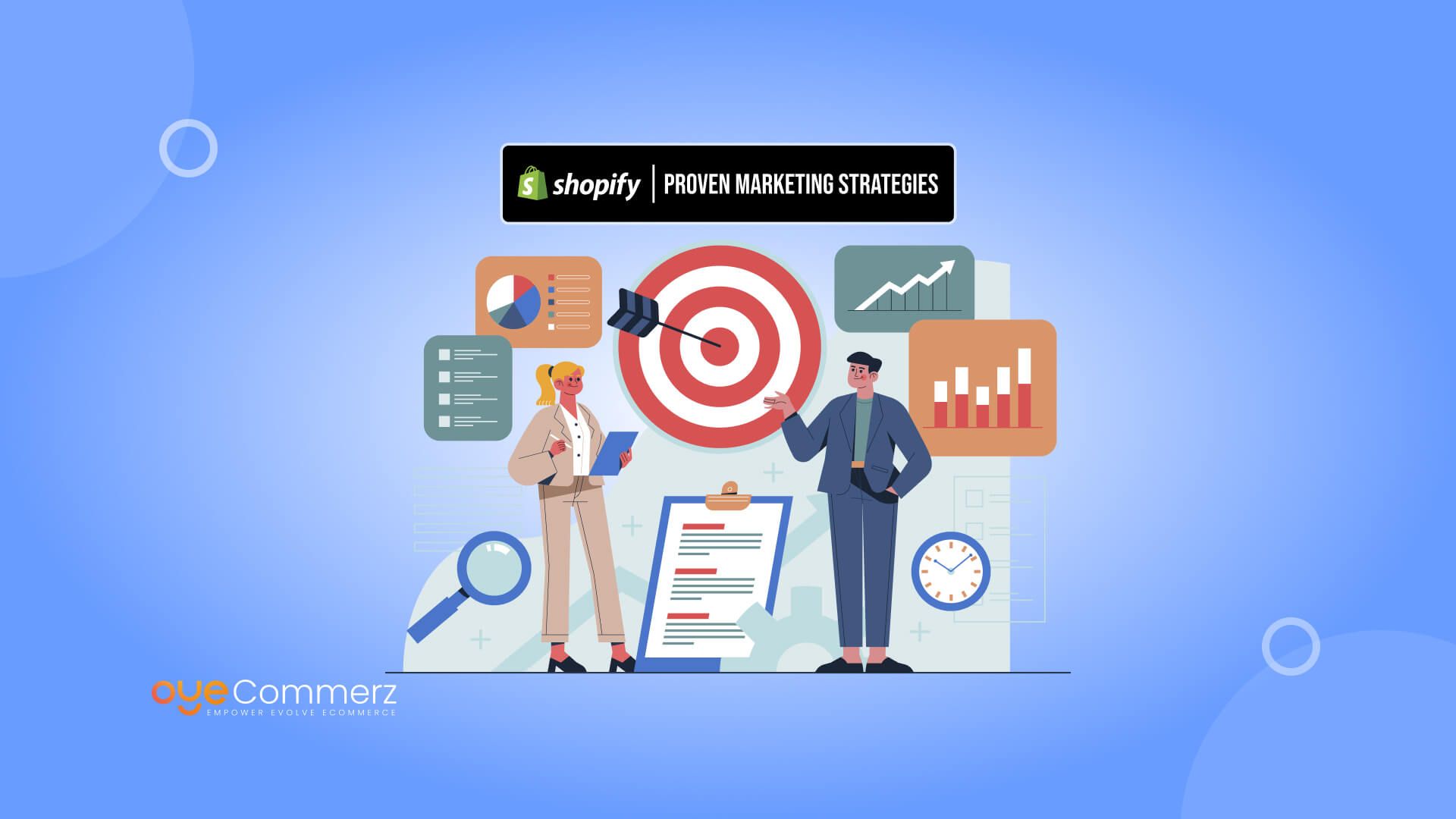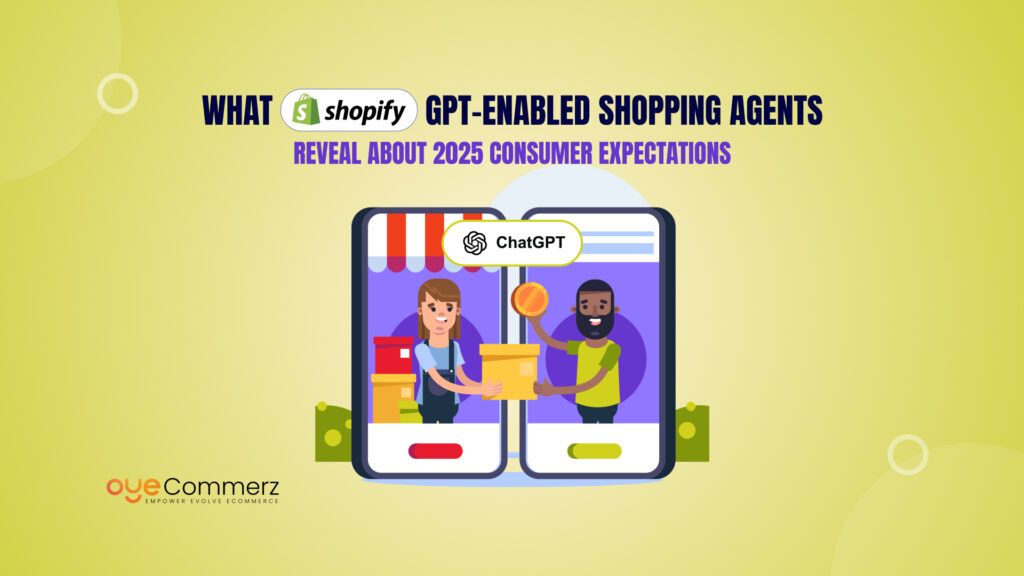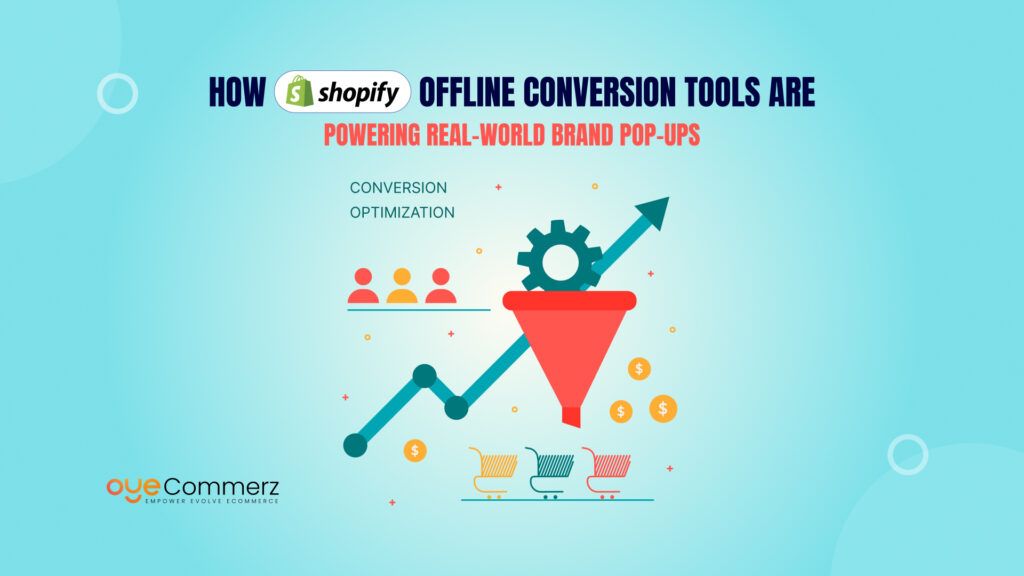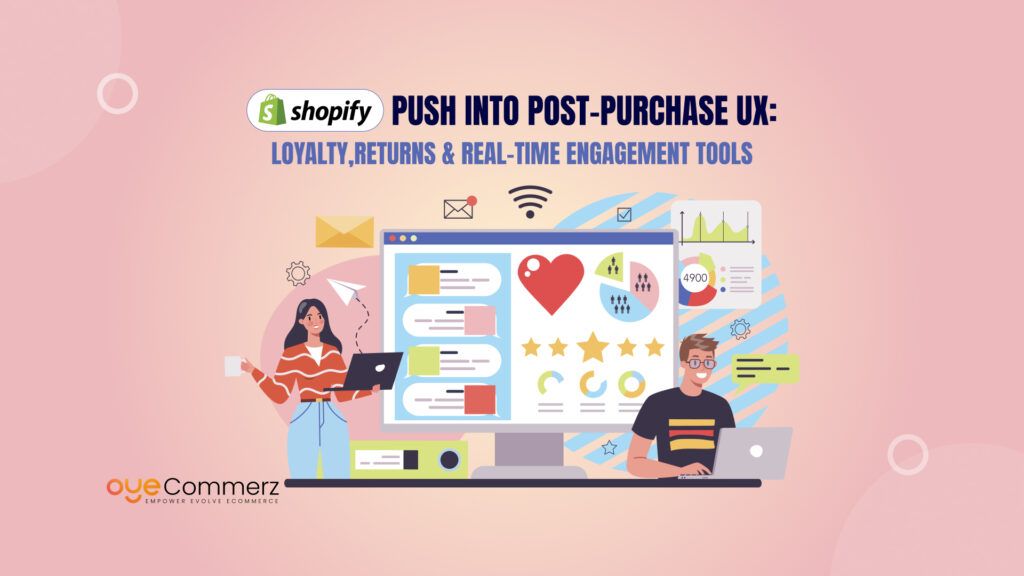Is your Shopify store ready to dominate in 2025? With eCommerce evolving faster than ever, standing out is no longer optional, it’s a necessity. As competition intensifies, brands that fail to adapt risk losing potential customers to more agile competitors. Shoppers today expect personalized experiences, seamless navigation, and lightning-fast checkouts. But how can you ensure that your Shopify store not only meets but exceeds these expectations?
This blog dives deep into proven marketing strategies tailored for 2025 that will help you drive more traffic, boost conversions, and maximize sales. From leveraging AI and automation to mastering social commerce and optimizing for mobile users, these actionable tips will equip you to stay ahead of the curve. Ready to unlock the full potential of your Shopify store? Let’s explore the game-changing strategies that can take your business to the next level!
Table of Contents
ToggleUnderstanding Shopify Trends in 2025
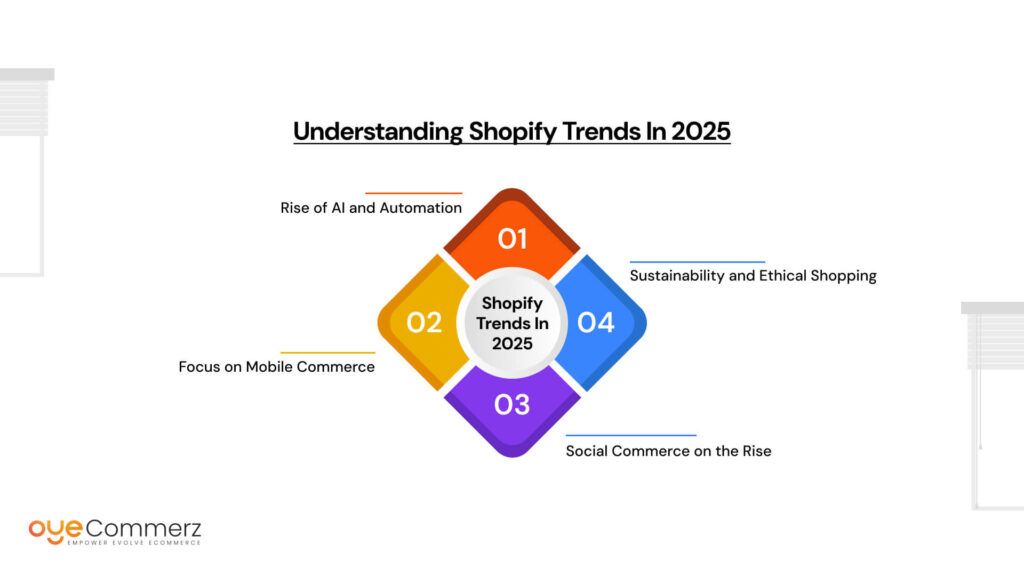
In 2025, eCommerce is set to evolve rapidly, and staying ahead means embracing the latest trends that shape how consumers interact with brands. Here’s what Shopify store owners need to know:
Rise of AI and Automation
AI is transforming the eCommerce landscape by offering hyper-personalized shopping experiences. Shopify stores equipped with AI-powered product recommendations, chatbots, and dynamic pricing can create tailored journeys for every shopper. Imagine a skincare store suggesting the perfect product based on a customer’s skin type and previous purchases, that’s the power of AI in action. Moreover, AI-driven automation takes care of repetitive tasks like sending follow-up emails or updating inventory, allowing businesses to focus on growth.
Focus on Mobile Commerce
With mobile commerce accounting for over 72% of all eCommerce sales by 2025, optimizing for mobile is a game-changer. A slow, clunky mobile experience leads to cart abandonment, but a seamless, mobile-optimized store keeps customers engaged and converts them faster. Responsive design, lightning-fast load times, and intuitive navigation will ensure that mobile shoppers complete their purchases effortlessly. Shopify merchants should prioritize mobile UX to capture this growing audience.
Social Commerce on the Rise
Social media platforms like Instagram, TikTok, and Facebook are no longer just for entertainment, they’re powerful sales channels. Features like shoppable posts, livestream shopping, and in-app checkouts allow brands to convert social engagement into real-time sales. In 2025, brands that embrace social commerce and leverage influencer collaborations will see higher conversions and better brand visibility.
Sustainability and Ethical Shopping
Modern shoppers are more conscious of the impact their purchases have on the environment. A survey predicts that over 60% of consumers will prefer brands that focus on sustainability in 2025. Shopify stores that highlight eco-friendly practices, use sustainable packaging, and support ethical sourcing will not only attract conscious buyers but also build stronger brand loyalty.
Optimizing Shopify for Better Conversions
Driving traffic to your Shopify store is great, but converting that traffic into paying customers is where the real success lies. Here’s how to optimize your Shopify store for higher conversions:
Speed Optimization
A fast-loading website enhances the user experience and directly impacts conversions. Studies show that a 1-second delay in page load time can reduce conversions by 7%. Compressing images, enabling lazy loading, and minimizing JavaScript files can significantly boost your store’s loading speed. Faster pages lead to lower bounce rates and higher customer satisfaction.
High-Converting Product Pages
Your product page is where buying decisions happen. To ensure maximum impact:
- Engaging Descriptions: Craft benefit-driven descriptions that solve customer pain points and highlight unique features.
- High-Quality Images and Videos: Showcase multiple angles and include demonstration videos to build trust.
- Trust Signals: Adding social proof like customer reviews and ratings increases trust and boosts conversions.
Seamless Checkout Process
A complicated checkout process leads to cart abandonment. Simplify the process by:
- Enabling guest checkout to avoid unnecessary steps.
- Auto-filling customer information to reduce friction.
- Offering multiple payment methods, including digital wallets like Google Pay and Apple Pay.
Upselling and Cross-Selling Techniques
To maximize order value, use:
- Upselling: Encourage customers to choose a premium version of their chosen product.
- Cross-Selling: Suggest complementary products that enhance the original purchase. For instance, offering a protective phone case when a customer buys a smartphone.
By implementing these Proven marketing strategies, Shopify store owners can ensure a smoother buying journey, reduce cart abandonment, and boost overall conversions.
Leveraging Email and SMS Marketing

Email and SMS marketing remain powerful tools to engage customers, nurture loyalty, and drive repeat sales. Here’s how Shopify store owners can make the most of them:
Personalized Email Campaigns
One-size-fits-all emails are outdated. Customers expect personalized experiences, and segmented email campaigns can significantly improve open rates and conversions. By dividing your audience based on purchase history, behavior, and preferences, you can:
- Recommend relevant products to different customer segments.
- Send exclusive offers to high-value customers.
- Share educational content that resonates with your target audience.
Abandoned Cart Recovery
Cart abandonment is a common challenge for Shopify store owners. Automated follow-up emails can recapture lost sales by reminding customers of their pending purchases.
- Send a gentle reminder within 24 hours.
- Offer limited-time discounts to create urgency.
- Highlight the benefits of completing the purchase.
Example: “Oops! You left something behind. Complete your purchase now and enjoy 10% off — but hurry, this offer expires soon!”
Exclusive Offers and Loyalty Programs
Loyalty programs are a powerful way to retain customers and encourage repeat purchases. Offering rewards, early access to sales, and referral bonuses builds trust and keeps customers coming back.
- Create tiered rewards programs that incentivize higher spending.
- Send personalized offers via email to boost customer engagement.
SMS Marketing in 2025
With SMS open rates averaging 98%, SMS marketing is an incredibly effective way to communicate with customers in real time. SMS can be used to:
- Send order confirmations and shipping updates.
- Share flash sale alerts and exclusive offers.
- Remind customers of loyalty rewards or abandoned carts.
By integrating personalized email and SMS campaigns, Shopify store owners can nurture customer relationships, drive repeat sales, and create a loyal customer base in 2025.
Mastering Social Media Marketing
In 2025, social media is no longer just about building brand awareness, it’s a powerhouse for driving direct sales and engagement. To maximize your Shopify store’s success, here’s how to dominate social media marketing:
Video Content Dominance
Short-form videos are ruling the digital landscape. Platforms like Instagram Reels, TikTok, and YouTube Shorts offer bite-sized, engaging content that captures attention quickly. Brands showcasing behind-the-scenes processes, product demonstrations, and customer testimonials through video can boost engagement and trust. Plus, video content has a higher likelihood of being shared, increasing organic reach.
User-Generated Content (UGC)
Nothing builds trust like real customers advocating for your brand. Encouraging satisfied customers to share their experiences through photos, videos, and reviews not only enhances credibility but also drives conversions. Featuring UGC on product pages or social media makes your brand more relatable and authentic, which resonates with new shoppers.
Influencer Collaborations
Influencers continue to shape purchasing decisions, and in 2025, this trend will only get stronger. Partnering with micro and macro influencers who align with your brand values can expand your reach and credibility. Micro-influencers, in particular, have highly engaged audiences and can provide authentic recommendations that feel more personal. “Brands using influencer marketing can generate up to 11x higher ROI than traditional ads.”
Shoppable Posts and Livestreams
Social commerce is booming, and platforms like Instagram and Facebook allow customers to purchase products directly through shoppable posts and livestreams. Hosting live product demos or Q&A sessions with influencers can create urgency and excitement, converting viewers into customers in real time. Brands that leverage these interactive features will stay ahead of the curve and boost sales directly through social platforms.
Winning with SEO and Content Marketing
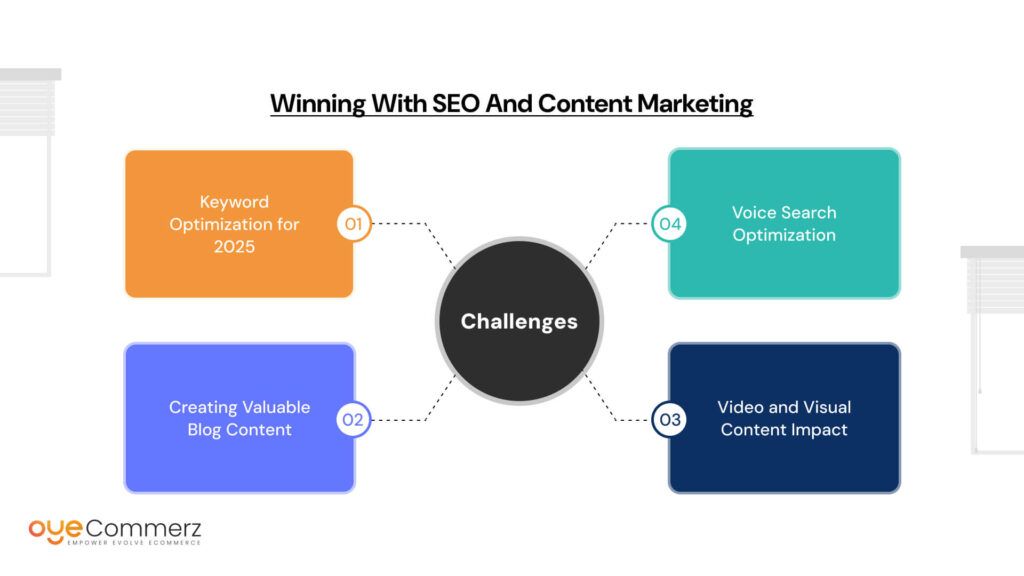
In 2025, search engine optimization (SEO) and content marketing will remain essential for driving organic traffic and boosting brand authority. Here’s how to harness their power:
Keyword Optimization for 2025
Keyword research isn’t just about ranking anymore, it’s about understanding how people search. Long-tail keywords, conversational queries, and question-based searches will dominate. Optimizing your Shopify store for these terms can improve your chances of appearing in search results. Use tools like Google Keyword Planner and Ahrefs to identify trending keywords relevant to your niche.
Creating Valuable Blog Content
High-quality blog content not only educates your audience but also drives organic traffic. Write informative, SEO-friendly blogs that answer common customer questions and address pain points. Focus on evergreen content that provides long-term value and positions your brand as an authority in the industry. Blog posts that include listicles, how-to guides, and product comparisons tend to perform well in search results.
Video and Visual Content Impact
Visual and interactive content increases dwell time, reducing bounce rates and improving SEO rankings. Embedding product videos, tutorials, and customer testimonials within your content keeps visitors engaged and encourages them to explore more pages on your site.
Voice Search Optimization
With the rise of smart devices, voice search is becoming a key driver of organic traffic. By 2025, over 50% of searches are expected to be voice-based. Optimizing for voice search means using natural, conversational language in your content and focusing on answering specific customer queries.
By staying ahead with SEO and content marketing trends, Shopify store owners can establish long-term visibility and drive consistent organic traffic.
Exploring Paid Advertising for Maximum ROI
Paid advertising remains one of the fastest ways to boost Shopify sales, and in 2025, smart and proven marketing strategies will be key to achieving maximum ROI. Here’s how to make the most of your ad spend:
Google Ads and Smart Shopping Campaigns
Google Ads continues to be a reliable channel for driving high-intent traffic. Smart Shopping Campaigns, powered by AI, optimize ad placements by analyzing customer behavior and delivering ads that are most likely to convert. These campaigns use machine learning to determine the best combination of assets (images, text, and product data) and serve them to the right audience at the right time.
Facebook and Instagram Ads Best Practices
Visual content drives engagement, and Facebook and Instagram ads give brands the ability to create stunning, targeted ads that resonate with their audience. Carousel ads, dynamic product ads, and video ads showcasing product features and benefits can capture user attention. To maximize impact:
- Use audience segmentation to tailor ads for different customer groups.
- A/B test ad creatives to identify what performs best.
- Include clear CTAs that encourage action.
Retargeting for Higher Conversions
Retargeting is a game-changer for bringing back interested shoppers who didn’t convert the first time. By displaying ads to users who visited your store or added items to their cart but didn’t complete the purchase, you can encourage them to return and finalize their orders.
Exploring Emerging Platforms
Diversifying your ad strategy by exploring new platforms like TikTok and Pinterest can unlock untapped audiences. TikTok’s short-form content format allows brands to create engaging ads that resonate with younger demographics, while Pinterest ads cater to shoppers actively searching for ideas and inspiration.
By strategically combining Google, Facebook, Instagram, and emerging platforms, Shopify store owners can maximize ad performance and achieve a higher return on investment in 2025.
Leveraging AI and Chatbots for Customer Engagement
In 2025, AI is no longer a luxury, it’s a necessity for enhancing customer engagement and driving sales. Shopify stores that leverage AI and chatbots can create personalized, seamless experiences that keep customers coming back.
AI-Powered Product Recommendations
AI analyzes user behavior, past purchases, and browsing patterns to offer tailored product recommendations. Imagine a customer browsing for running shoes and being shown complementary products like fitness gear or moisture-wicking socks. This level of personalization not only enhances the shopping experience but also increases the chances of upselling and cross-selling.
Chatbots for 24/7 Customer Support
Today’s customers expect instant responses. AI-powered chatbots can handle common queries, provide product recommendations, and even assist with tracking orders all in real time. This ensures that customer concerns are addressed promptly, boosting satisfaction and reducing cart abandonment.
AI-Driven Email Responses
AI has revolutionized email marketing by enabling automated yet personalized responses. Whether it’s a thank-you email after a purchase or a follow-up message about a customer’s abandoned cart, AI ensures timely communication that maintains a personal touch. Personalized emails driven by AI have higher open and click-through rates, keeping customers engaged and informed.
Reducing Cart Abandonment
Cart abandonment is a common challenge, but AI-powered chatbots can help. By sending timely reminders and offering assistance during checkout, chatbots can guide hesitant customers toward completing their purchases. For example, a chatbot can offer a limited-time discount or answer last-minute questions, addressing concerns that may be preventing conversion.
Building Customer Loyalty and Retention
Customer loyalty isn’t built overnight, it’s nurtured through consistent engagement, personalized rewards, and value-driven relationships. In 2025, Shopify store owners can boost customer retention by focusing on these proven marketing strategies:
Loyalty Programs with Personalized Rewards
Loyalty programs that offer points, discounts, or exclusive perks encourage repeat purchases. When rewards are personalized based on a customer’s preferences and purchase history, they feel valued and are more likely to stay loyal. For instance, offering bonus points on a customer’s favorite product or giving early access to a new collection enhances the emotional connection with the brand.
Subscription Models for Recurring Revenue
Subscription-based models offer convenience to customers while providing Shopify store owners with predictable, recurring revenue. Whether it’s a monthly beauty box or a regular supply of pet food, subscriptions create a sense of anticipation and keep customers engaged. Additionally, offering exclusive discounts to subscribers increases retention and encourages long-term commitment.
Exclusive Membership Perks
Creating a VIP membership program with early access to new products, exclusive discounts, and personalized offers can drive customer loyalty. These perks make loyal customers feel appreciated, strengthening their connection with the brand. For example, offering members-only sales or special previews creates a sense of exclusivity that keeps customers coming back.
Gathering Feedback and Reviews
Listening to your customers is key to improving your services. Encouraging customers to leave reviews and provide feedback not only builds trust but also helps identify areas for improvement. Customers appreciate brands that value their opinions, leading to increased loyalty and advocacy. “72% of consumers say positive reviews increase their trust in a brand.”
Exploring Emerging Technologies in eCommerce
The future of eCommerce is being shaped by cutting-edge technologies that offer immersive and secure shopping experiences. Shopify store owners who embrace these innovations can stay ahead of the competition and enhance customer satisfaction.
Augmented Reality (AR) Shopping Experiences
AR technology allows customers to visualize products before purchasing, bridging the gap between online and in-store shopping. Whether it’s trying on virtual clothes or placing furniture in a living room, AR provides an interactive, confidence-boosting experience that reduces returns and enhances customer satisfaction.
Virtual Shopping Assistants
AI-powered virtual assistants guide shoppers through their buying journey, offering personalized recommendations and answering questions in real time. These assistants simulate in-store experiences, making online shopping more engaging and intuitive. For example, a virtual assistant can suggest outfit combinations or recommend skincare routines based on user preferences.
Blockchain and Secure Payments
With increasing concerns about online security, blockchain technology offers transparent and secure payment solutions. Blockchain ensures that transactions are tamper-proof, reducing the risk of fraud and increasing consumer trust. By integrating blockchain payments, Shopify merchants can provide a safer shopping environment that enhances customer confidence.
Metaverse Commerce
The metaverse is redefining digital interactions, and eCommerce brands are tapping into this space to create immersive shopping experiences. Virtual storefronts, interactive showrooms, and gamified shopping journeys in the metaverse allow brands to connect with customers on a deeper level. Early adopters of metaverse commerce are expected to gain a competitive edge in attracting tech-savvy consumers.
Data-Driven Decision-Making for Growth
In 2025, data is the key to unlocking eCommerce success. Shopify store owners who leverage data effectively can make informed decisions, optimize the proven marketing strategies, and enhance customer experiences.
Analyzing Customer Behavior
Understanding how customers interact with your store helps identify what works and what needs improvement. Tools like Google Analytics and Shopify Analytics provide insights into user behavior, such as popular products, average time spent on pages, and drop-off points. This data helps refine marketing efforts and optimize the shopping experience.
A/B Testing for Optimized Results
A/B testing allows store owners to experiment with different elements, from product page layouts to CTA buttons, and identify which version drives better results. By continuously testing and refining, Shopify merchants can increase conversions and enhance the overall user experience.
Tracking KPIs and Metrics
Key performance indicators (KPIs) such as conversion rates, average order value (AOV), and customer lifetime value (CLV) provide a comprehensive view of business performance. Regularly monitoring these metrics helps store owners identify trends, set realistic goals, and adjust marketing strategies to maximize growth.
Predictive Analytics in 2025
AI-driven predictive analytics takes data analysis a step further by forecasting future trends and customer behaviors. Using historical data, predictive models can identify which products are likely to be in demand, enabling businesses to optimize inventory and marketing efforts.
By leveraging data-driven strategies, Shopify store owners can make smarter decisions, enhance customer experiences, and drive sustainable growth in 2025.
Ready to Boost Your Shopify Sales?
Implement these proven marketing strategies today to drive traffic, increase conversions, and build lasting customer relationships. Oyecommerz is here to help.
Don’t wait, future-proof your Shopify store and dominate 2025!
Contact us now!
Ready to Migrate to Shopify Plus? Let Us Help You Make the Switch!
Conclusion
As we move into 2025, Shopify store owners need to embrace cutting-edge proven marketing strategies to stay ahead in the highly competitive eCommerce market. Key strategies include leveraging AI-powered product recommendations and chatbots to enhance customer engagement, optimizing SEO and content marketing to drive organic traffic, and mastering social media marketing with influencer collaborations and UGC to boost trust and conversions. Additionally, integrating AR shopping experiences, subscription models, and secure blockchain payments ensures that your store remains relevant and future-ready.
To achieve sustainable growth, it’s essential to analyze customer behavior, track KPIs, and use predictive analytics to make informed decisions. The eCommerce world is evolving, and staying ahead means continuously learning, adapting, and embracing new technologies.

